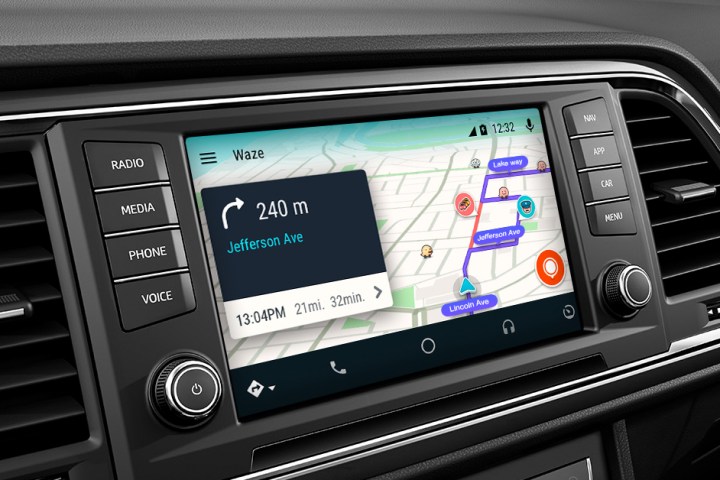
Waze has been one of Android Auto’s most highly requested apps practically since the platform launched, as it offers a number of features not found in Google Maps. You can report road conditions, and occasionally the app may ask you to confirm what others users have reported. It’s a simple but powerful system built on a loyal community of users, now made even better through the use of your car’s own infotainment screen.
Though the presence of a larger display in your car’s dash always makes navigation easier, Waze is hoping you’ll keep your hands on the wheel and use your voice as much as possible. The app supports “OK Google” commands, so you can start your journey without fiddling with the on-screen map. It also works with your car’s full range of built-in controls, including steering wheel buttons, and features customization visual and audio alerts.
Waze does not yet support Android Auto on your phone’s display, but the company says it’s coming in an upcoming update. Furthermore, some additional features, like speed limit indicators, will also arrive later on, according to The Verge. At this stage, there are no plans to bring the app to Apple’s CarPlay, due to restrictions against third-party navigation apps.
While Android Auto and CarPlay offer a much more convenient and safer way to interact with your phone on the road, the experience is still a bit awkward for drivers. Standard controls for the climate system and stereo are still housed in the manufacturer’s own interface, so users frequently need to leave their phone apps to adjust other settings.
For this reason, Google and Volvo recently worked together on developing a deeply integrated, cohesive experience for upcoming vehicles that operates more like a traditional infotainment system — encapsulating all controls, rather than those that simply concern Android. It has been styled to blend in with Volvo’s existing user interface, but still contains all the benefits you’d expect from Google’s apps, like location ratings and hours of operation in Maps, for example. Volvo will release its first cars in this partnership later this year.
Editors' Recommendations
- The 1Password Android app just got a huge upgrade
- The best iPhone and Android apps for Black History Month 2024
- If you have one of these apps on your Android phone, delete it immediately
- This app put iMessage on my Android phone — and it blew me away
- These are my 8 favorite charity apps for iPhone and Android


